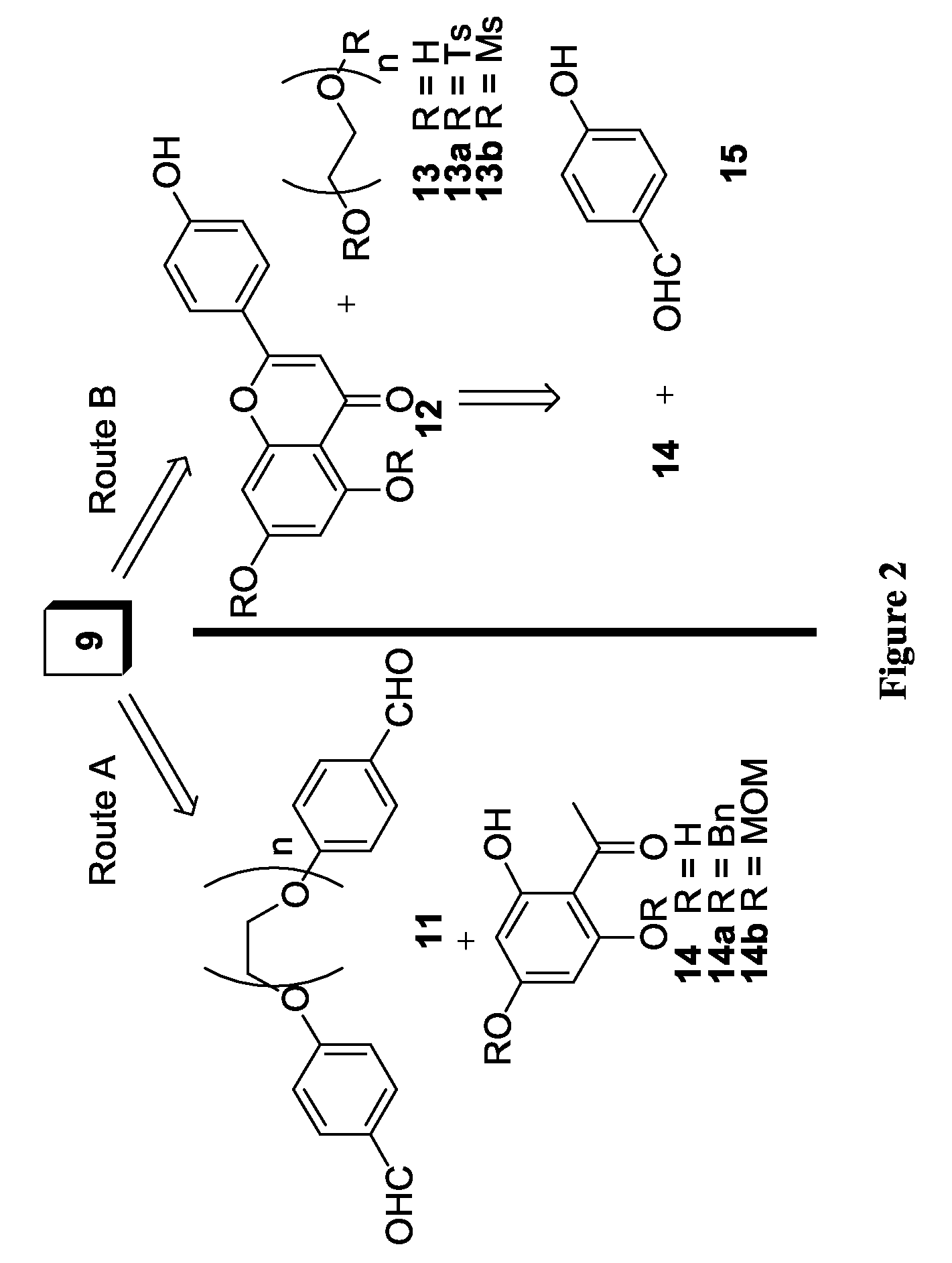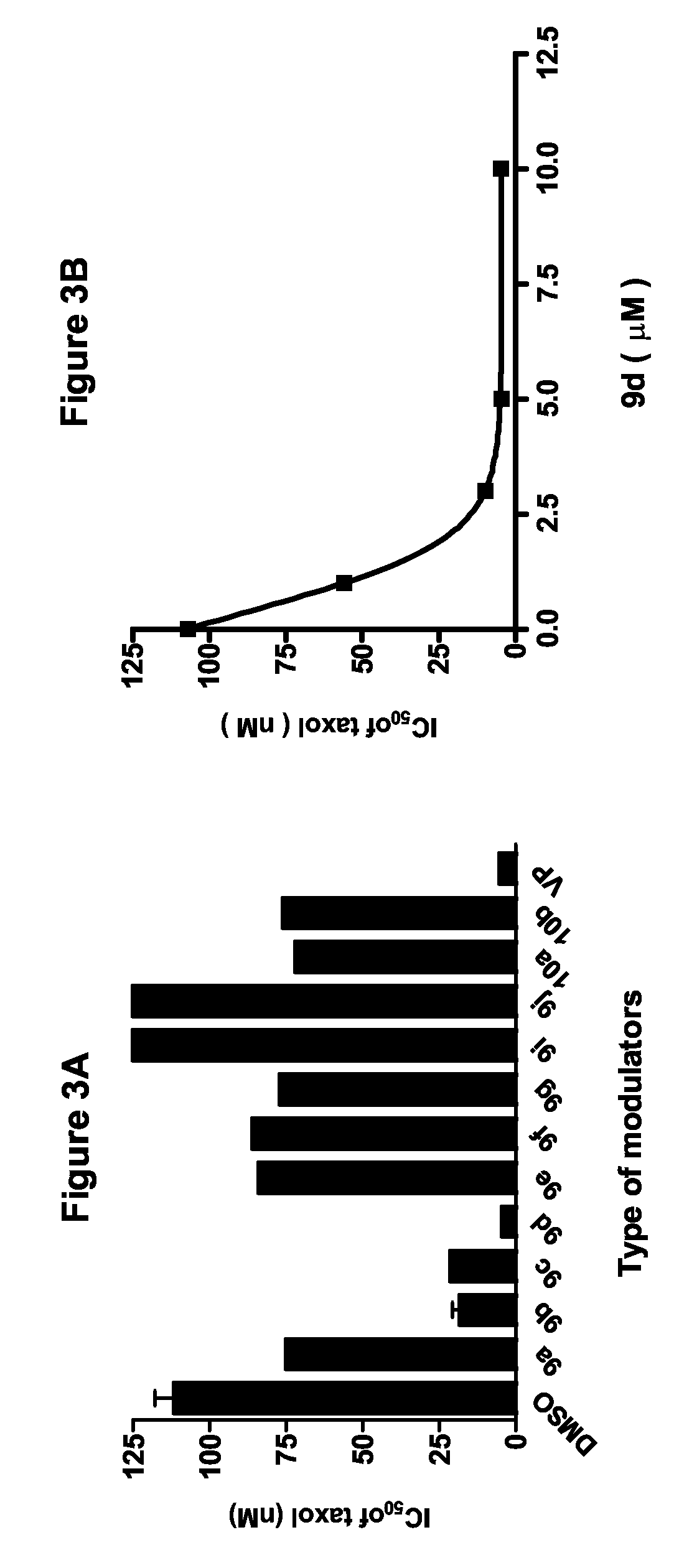Flavonoid dimers and methods of making and using such
a technology of flavonoid dimers and dimers, which is applied in the field of flavonoid dimers and methods of making and using such, can solve the problems of limited use, drug resistance, and limitations of the current generation of flavonoid modulators, and achieve the effect of reducing the resistance of a drug and reducing the p-glycoprotein based multidrug resistan
- Summary
- Abstract
- Description
- Claims
- Application Information
AI Technical Summary
Benefits of technology
Problems solved by technology
Method used
Image
Examples
Embodiment Construction
[0062]This invention is now described by way of example with reference to the figures in the following paragraphs.
[0063]Objects, features, and aspects of the present invention are disclosed in or are obvious from the following description. It is to be understood by one of ordinary skilled in the art that the present discussion is a description of exemplary embodiments only, and is not intended as limiting the broader aspects of the present invention, which broader aspects are embodied in the exemplary constructions.
[0064]The approach to improve the potency and selectivity of flavonoids of this invention is to take advantage of the pseudodimeric nature and the multiple binding sites of P-gp by using polyvalent interactions. Polyvalent interactions in biological systems are characterized by the simultaneous binding of multiple ligands on one biological entity. “Polyvalency” refers to a single molecule with one or more “ligands” that can simultaneously bind to one biological entity. Un...
PUM
| Property | Measurement | Unit |
|---|---|---|
| concentration | aaaaa | aaaaa |
| melting point | aaaaa | aaaaa |
| chemical shifts | aaaaa | aaaaa |
Abstract
Description
Claims
Application Information
 Login to View More
Login to View More - R&D
- Intellectual Property
- Life Sciences
- Materials
- Tech Scout
- Unparalleled Data Quality
- Higher Quality Content
- 60% Fewer Hallucinations
Browse by: Latest US Patents, China's latest patents, Technical Efficacy Thesaurus, Application Domain, Technology Topic, Popular Technical Reports.
© 2025 PatSnap. All rights reserved.Legal|Privacy policy|Modern Slavery Act Transparency Statement|Sitemap|About US| Contact US: help@patsnap.com



